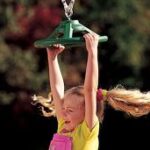
What is crawling?
Crawling is an important developmental milestone for infants that typically occurs prior to learning to walk when the infant is around six to ten months old. This is a gross motor skill that allows infants to interact with their environment and seek social interaction. Crawling is a fundamental part of development and can be demonstrated in many different ways. When infants crawl in non-conventional ways, it doesn’t necessarily indicate motor delay; rather it may suggest that the infant has found the most efficient way for themselves to navigate their surroundings. There are five types of crawling patterns that will be discussed in this blog post.
- Creeping: the pattern you would most likely envision when you think of crawling. It consists of a reciprocal motion between the arms and legs that results in movement.

- Bear Crawl: similar to the aforementioned crawling pattern, but instead, the child is performing the reciprocal movements with their hands and feet on the floor, leaving their behind up in the air.

- Army Crawl: for this pattern, the child is positioned on their stomach while propped up on their elbows. A pulling motion with the arms leads to this movement.

- Scoot Crawl: this is a less efficient movement pattern that consists of the child sitting on their behind while pulling themselves with their arms.

- Rolling Crawl: this is when instead of using either the arms or legs to initiate movement, the child shifts their weight and rolls in the direction of their choosing.

What are the benefits of crawling?
Crawling is important for the development of reflexes, coordination and strength, and sensory-motor skills.
- One of the sensory-motor skills targeted during crawling is tactile sensation. Crawling can help to develop the palmar arches in the hand (the curved structure in the palm of the hand when the fingers are bent). This helps development because these structures let the hand grasp and pinch objects, which helps with the development of handwriting. Crawling also provides an opportunity for the integration of proprioceptive input through weight bearing on the hands and knees during the movement. Proprioception helps one develop an awareness of their body’s position and movement in space. It plays a significant role in motor planning, coordination, and body awareness.
- Crawling is also crucial in the development of full body strength. This movement, for the most part, requires the stability of the arms and legs to support the body. The repeated pulling and pushing motions help to generate arm and leg strength as well as core stability. Both the stomach and back muscles are engaged when crawling and this helps with the development of posture and overall stability. Crawling also helps to develop coordination skills through the reciprocal arm and leg movements between the left and right sides. This movement facilitates the development of using both sides of the body and the capability to cross the body’s midline.
- Reflexes are involuntary, automatic movements controlled by the brain stem. A major reflex that helps to develop a crawling pattern is the Symmetrical Tonic Neck Reflex (STNR). This reflex causes the reciprocal movement seen with crawling and helps with getting infants in the hands and knees position. It allows for independent movement between the upper and lower half of the body. When the infant’s head is bent forward, their legs straighten and their arms bend. When their head is tilted backwards, the legs bend and the arms straighten.
What would happen if crawling doesn’t occur?
Recently, crawling was removed from the list of necessary developmental milestones for infants due to the fact that some infants skip crawling altogether and go right to walking. There is no universal timeline for infant development. Even though crawling is now deemed unnecessary, it is still important to encourage access to tummy time and various toys to promote the proper stimulation needed to learn and grow. The easiest way to promote crawling is by creating an optimal environment for exploration. Positioning the infant in a prone position will provide opportunity for these skills to develop. To relieve some of the weight off of their arms and legs, a rolled up towel or peanut ball can be placed under their belly. One can promote movement in this position by placing toys just out of reach such that the child has to extend themselves to grab them. Using this technique helps to develop skills that would be learned through crawling.
Though crawling is not technically a milestone, it provides a lot of integral information to the body as previously stated. If this were to happen, the STNR reflex would not be properly integrated, meaning that this reflex would remain involuntary, which could cause long term effects. Examples of this include poor hand eye coordination, slumping while seated, and overall clumsiness. Since crawling helps to strengthen the hand and arm, children that do not crawl can experience difficulty pushing up on their arms and with handwriting. Also, because crawling helps to integrate bilateral coordination, failure to crawl means a child may have a hard time using both sides of the body together in a controlled manner. This often makes it harder to dress, tie shoes, and leads to overall clumsiness.
Is crawling just for infants?
No! It can be beneficial for individuals of all ages. Crawling is typically associated with infants, but older children can benefit both physically and cognitively when it is incorporated into their play or exercise routines. It can improve muscle strength, bilateral coordination, and can provide sensory input such as proprioception by bearing weight through the arms. It can also help cognitive development through problem solving and spatial perception skills. These skills used while crawling can contribute to the future development of many abilities, such as walking, reading, and cognition.






